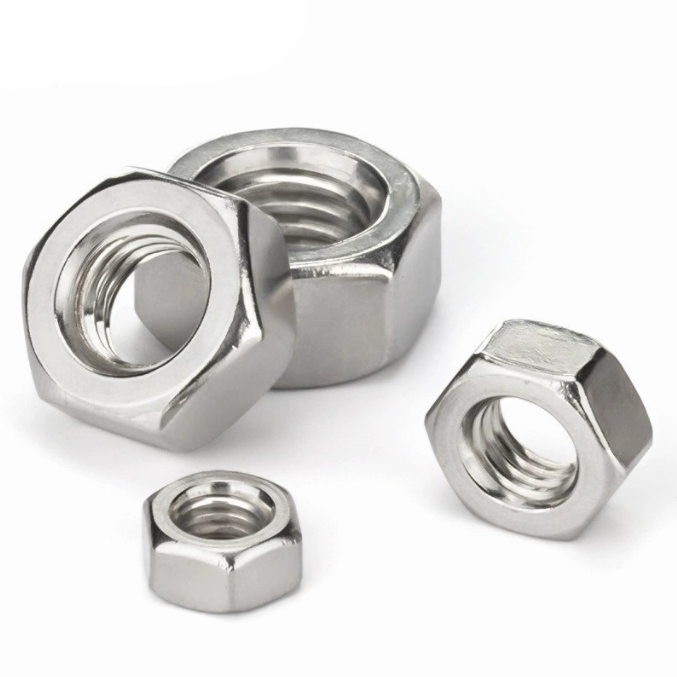

m10 flange nut
Dec . 01, 2024 20:00 Back to list
m10 flange nut
Understanding the M10 Flange Nut A Comprehensive Guide
Flange nuts, particularly the M10 variant, play a significant role in various engineering and construction applications. These specialized nuts are designed with a broad, flat flange that provides significant advantages over traditional nuts. The M10 designation refers to the nominal diameter of the screw or bolt it is designed to work with, specifically 10 millimeters. This article delves into the features, applications, benefits, and installation practices of M10 flange nuts.
What is an M10 Flange Nut?
An M10 flange nut is a type of fastener that is characterized by a wide, circular base (or flange) that is integrated into its design. This flange offers increased surface area, which helps distribute the load and reduces the risk of damage to the material being fastened. M10 flange nuts are usually produced from materials such as steel, stainless steel, or plastic, and they may come with various coatings to enhance corrosion resistance.
Key Features of M10 Flange Nuts
1. Flange Design The flange acts as a built-in washer, providing support and preventing the nut from pulling through the material during use. This is particularly useful in soft or brittle substrates. 2. Thread Size The M10 designation indicates the inner diameter of 10 mm and corresponds with metric threads. The standard pitch for an M10 nut is typically 1.5 mm.
3. Material Variety M10 flange nuts can be made from different materials, including low-carbon steel for general applications, galvanized steel for moderate corrosion resistance, and stainless steel for high-corrosion environments.
4. Hex Shape These nuts typically feature a hex shape, which allows for easy engagement with standard wrenches and sockets.
5. Locking Options Some M10 flange nuts come with built-in locking features, such as nylon inserts or serrated flanges, to prevent loosening due to vibrations.
Applications of M10 Flange Nuts
M10 flange nuts are widely utilized in numerous applications across various industries, including
- Automotive Used in assembling engine components, chassis, and suspension systems. - Construction Essential for securing beams, columns, and other structural elements due to their load-distributing properties. - Machinery Commonly found in equipment assembly, where a secure connection is crucial for operational safety and efficiency. - Furniture Assembly Utilized in the manufacture of metal and wooden furniture for secure connections that allow for easy disassembly and reassembly.
m10 flange nut

Advantages of Using M10 Flange Nuts
1. Enhanced Load Distribution The broad flange design helps in distributing the load across a larger area, which minimizes the risk of damaging the material, especially when fastening softer materials.
2. Vibration Resistance Many M10 flange nuts are designed to resist loosening due to vibrations and movement, making them ideal for machinery and automotive applications.
3. Ease of Installation The flange provides a solid surface for wrench engagement, enabling easy and straightforward installation, even in tight spaces.
4. Reduced Number of Components Because they integrate a washer and a nut in one component, M10 flange nuts eliminate the need for separate washers, streamlining the assembly process.
Installation Tips for M10 Flange Nuts
1. Surface Preparation Ensure that the surfaces being joined are clean and free from debris to achieve a solid connection.
2. Proper Torque Use a torque wrench to apply the appropriate amount of torque, preventing over-tightening that can strip threads or damage components.
3. Check Alignment Before fastening, double-check that holes are aligned properly to avoid cross-threading and ensure effective load distribution.
4. Inspection Periodically inspect the installed nuts for signs of wear or loosening, particularly in applications subject to vibrations.
Conclusion
The M10 flange nut is a versatile and essential fastener used across many sectors, offering numerous benefits in terms of load distribution, ease of installation, and resistance to loosening. By understanding the characteristics and applications of M10 flange nuts, engineers and tradespeople can make informed choices that enhance the safety and reliability of their projects. Whether in construction, automotive manufacturing, or machinery assembly, the M10 flange nut proves to be a crucial component in achieving strong, lasting connections.
Latest news
-
High-Strength Hot Dip Galvanized Bolts - Hebei Longze | Corrosion Resistance, Customization
NewsJul.30,2025
-
Hot Dip Galvanized Bolts-Hebei Longze|Corrosion Resistance&High Strength
NewsJul.30,2025
-
High-Strength Hot-Dip Galvanized Bolts-Hebei Longze|Corrosion Resistance&High Strength
NewsJul.30,2025
-
Hot Dip Galvanized Bolts-Hebei Longze|Corrosion Resistance&High Strength
NewsJul.30,2025
-
Hot Dip Galvanized Bolts - Hebei Longze | Corrosion Resistance, High Strength
NewsJul.30,2025
-
High-Strength Hot Dip Galvanized Bolts-Hebei Longze|Corrosion Resistance, Grade 8.8
NewsJul.30,2025

